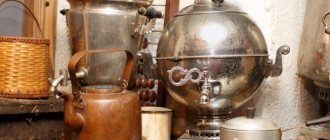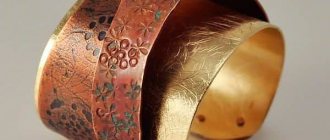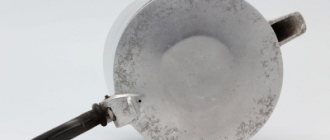Many people have things made of brass in their homes. These could be kitchen utensils, dishes, antique jewelry or icons. All these products require periodic cleaning. To clean brass at home and not damage the metal, you need to clean it according to all the rules. Valuable antique items that have served for decades require especially careful handling.
Brass and its applications
Brass is a metal alloy whose main components are zinc and copper. Tin, lead, nickel, manganese, and other metals are used as additional additives. According to the standard formula, the ratio of zinc to copper is 2:1, but in recent years the volume fraction of zinc has been reduced to 30%. The characteristics of the alloy depend on the ratio of metals. Therefore, if the product has a technical purpose, the zinc content in it is increased. At the same time, the price is significantly reduced.
Brass is one of the most common alloys; it has great wear resistance, but often oxidizes. An alloy with a zinc content of 20% is often used for the manufacture of car parts and heating appliances. If the zinc content is 40%, then fittings or stamped products are made from the alloy. Alloys with complex compositions are used in various fields: in shipbuilding, for the production of watches, aircraft, and more.
This alloy is often used to make artistic accessories and jewelry, as some of its types are very similar to gold. Due to its low magnetization ability, brass is used to make compasses. High thermal conductivity makes this metal an excellent raw material for the production of teapots and samovars.
Effective cleaning methods
Before cleaning a brass item, it is carefully inspected. Such things can be all-metal or varnished. This determines which cleaning method can be used without damaging the product.
Important!
If the item is antique or has great historical value, it is not recommended to clean it at all. This procedure removes the patina, which gives the product special beauty and value.
Rules for caring for brass items:
- Brass items coated with varnish cannot be treated with aggressive substances. To clean them, use a soap solution and soft rags.
- If the item is heavily soiled or covered with oxides, it is cleaned with soft compounds without large abrasive components. In this case, the effect of the substance is first assessed on an inconspicuous area of the object. Soft brushes are used for cleaning.
- Compositions containing acids clean brass surfaces very quickly and efficiently. But using them as cleaning agents is dangerous. If used incorrectly, there is a high probability of damaging the metal.
- Brass utensils cannot be washed in the dishwasher. It will become dull and lose its attractive appearance.
Before using special cleaning products, brass products are washed in a warm soapy solution. it is prepared by adding dishwashing detergent to water or dissolving laundry soap shavings. Leave the items in the prepared solution for half an hour, then wash off the dirt with a soft cloth. Then the items are wiped dry. As a result of such washing, the product is cleaned of dark deposits and dirt.
Oxalic acid
In concentrated form, this substance is used very rarely. Oxalic acid is usually included in the list of ingredients in plumbing and tile cleaners. Such products are applied in liquid form to the item to be cleaned and wait for it to darken. Then the product is treated with a brush and sprinkled with baking soda. Then it is washed with running water and wiped.
For brass products that have not been cleaned for many years and are covered with a thick layer of oxide, using products with a low concentration of oxalic acid is ineffective. In this case, you can effectively clean brass from oxide with a concentrated solution of 10 liters of pure water and 200 g of oxalic acid. The object is placed completely in this solution and kept until the surface darkens. Then remove and wash under the tap.
Important!
Oxalic acid is a caustic substance. Therefore, when working with it, rubber gloves are put on your hands, and the respiratory system is protected with a respirator.
Acetone
This product has excellent solvent properties and is used to clean oxides from brass items. To do this, moisten a rag in acetone and wipe the outer surface of the product until the dark coating is completely removed. If the dirt does not come off well, the item is soaked in a boiling water solution of vinegar and salt. After boiling, place the product into the liquid and cook for 3 hours. When the plaque softens, remove it with a rag soaked in acetone.
Acetone is not suitable for cleaning lacquered brass items. This product corrodes the varnish layer and then has to be restored.
Toothpaste
In this way, dirt is removed from hard-to-reach areas of the object. After preliminary washing in a soapy solution, apply a small amount of toothpaste to the product and clean the object with a napkin or soft brush.
Citric acid and vinegar
To wash off old stains on the surface of a brass item, make a thick mixture of 1 tbsp. flour, 1 tbsp. l. vinegar and a small amount of water. Cover the surface of the object with this mass and wait for it to dry. Then the coating is removed and polished.
You can clean brass with vinegar alone. To do this, the liquid is heated and applied using a rag to the item to be cleaned. If the product is heavily contaminated, the area is treated several times.
Citric acid is also used as an anti-oxidation and anti-stain agent. To do this, squeeze the juice from 1 lemon and mix it with salt until a paste forms. It is applied to the surface of the object and wiped. Then the item is washed and wiped dry. Lemon must be used carefully, as it can damage the metal alloy.
Cleaning with sandpaper
This method is used to clean kitchen utensils if they are heavily smoked. Use fine-grained sandpaper to clean dishes with light pressure so as not to damage the metal. Remaining contaminants in hard-to-reach places are removed using chemical methods.
Sandpaper is not used for cleaning jewelry and decorative items. It can scratch the surface very easily. As a result, the decorative value of the item will be lost.
Cleaning with table salt
You can polish brass to a shine at home using regular table salt. It is mixed with a small amount of lemon juice and the surface of the products is cleaned. Another way to use salt is to mix 500 ml buttermilk with 1 tbsp. l. table salt. These products remove stubborn stains from brass items and make the surface shiny.
You can mix fine salt with light cream to form a thick paste. It is applied to the product and wiped. If the stains are persistent, leave the product on this area for 30 minutes. Then rinse the item under the tap with water.
Important!
When using cleaners with salt, you should wait until the crystals are completely dissolved before using the cleaner.
Professional cleaning products
For severe contamination and extensive oxides, acid compositions “Metalin” or “Delu” are used. They protect against the formation of oxides for a long time and keep the surface shiny for a long time. They can be found at various hardware stores. These substances are very aggressive, so they are used exactly according to the instructions. Having finished cleaning, the item is thoroughly washed to remove any remaining cleaner.
Important!
When working with acidic preparations, be sure to wear a respirator and rubber gloves.
Also, to remove stubborn stains and thick plaque, use the Trilon-B product. It is diluted with water in a ratio of 1:10 and items for cleaning are dipped into the resulting solution. The length of time the product is left in the liquid depends on how dirty it is. After the final removal of plaque, the item is washed with running water.
GOI paste for cars
Over time, scratches appear on the car body, headlights and glass dim, which greatly impairs the driver’s visibility. It would be logical to carry out polishing from time to time in a car dealership or with your own hands. A proven green mixture will help you cope with your problems.
Sand or polish?
All car owners should understand the fundamental differences between these processes.
- Grinding is a rough method of applying abrasives, which, by scraping off the top layer, level the surface. Used when serious scratches are evident. After this, the canvas will become matte, and additional exposure to compounds with fine grains will be required.
- Polishing is the final stage after grinding. The goal is to add shine to the product using fine-grained products.
Interesting! To understand what kind of GOI paste you will need for polishing or grinding the body, evaluate the condition of the car. To do this, run your fingernail over it. If it clings to a scratch, then the body will need grinding No. 3, and if not, then impact No. 2 or No. 1 will do.
Features of grinding different parts of a car
To polish the windshield, headlights or mirrors, use flannel, and felt is suitable for the body. The polishing paste is used as follows:
For glasses and headlights:
- Initially, wash the glass with water and shampoo, glass cleaner or alcohol, and wipe dry. This will enhance the effect.
- Polishing glass or headlights from scratches should be done with a special machine with a grinding wheel or a drill with a felt attachment. Manual work will only remove the dullness.
- Mix the green mass with machine oil at the rate of: a drop of oil per spoon of goya. Apply the mixture to the flannel pad of a polishing machine. Carefully treat the desired areas or, if desired, the entire glass.
- The direction of movement can be any, but the principle of lane overlap is encouraged.
- Periodically remove any remaining GOI with a paper towel and evaluate the result. Finish only when the area is perfectly smooth.
Important! If you are working on a specific area, then the surrounding area should be covered with plastic wrap so that you do not have to wash the entire car later.
- It is better not to grind excessively deep scratches, but to fill them with a special colorless compound.
Important! For glass, use only a thin mixture No. 1 or 2. Monitor the temperature of the glass, otherwise it will overheat and crack during the cleaning process.
For the body:
- To remove dullness from the body, clean the surface with a glass cleaner and wet it with water.
- Apply the paste to the circle of the car, wait until it accelerates to a speed of 1100 revolutions, and, without stopping, move across the area, maintaining an angle between the circle of the car and the body of 4-6 degrees.
- Remove any remaining drug with warm water under low pressure.
Video: Polishing a car with GOI paste
Light soil removal products
If there are no persistent stains on the surface of brass items, but only slight darkening and dullness, you can use less aggressive cleaning agents. For example, to remove plaque, ketchup is used:
- First, wash the product in soapy water.
- Then rub the surface with ketchup with a sponge and leave for 20 minutes.
- Then remove the soaked dirt with a sponge and rinse the item with warm water.
Another mild brass cleaner is yogurt. It is poured into a pan and objects made of brass alloy are lowered into the liquid. After keeping them in the dairy product for an hour, the products are removed, washed with running water and dried with a towel.
You can clean brass thoroughly with baking soda and lime:
- Mix sodium bicarbonate half and half with water.
- Apply the paste to the surface of the object.
- Leave for 20 minutes.
- Cut a lime and rub a piece over the surface of the product.
- Leave for 40 minutes, then wash everything with water.
If the first attempt fails to achieve perfect cleanliness, the process is repeated again.
How to remove varnish
Some brass items have a lacquer coating. It protects the product from the formation of oxides and provides it with shine. In places where the varnish layer is damaged, gradual oxidation of the metal occurs. Therefore, the item needs to be cleaned of varnish and the protective layer reapplied. It is convenient to do this under running hot water. This is the safest method of removing coating. Boiling in water for three minutes can also help remove old nail polish.
If hot water does not help, you can remove the old layer with nail polish remover. It is applied to the surface of the product using a brush. When the varnish is removed, the surface of the object is polished with a special paste. After this, you can apply a new coat of varnish.
Preparing to Clean a Brass Item
Before starting the cleaning procedure, you need to determine whether the product is actually made of brass. To do this, you can bring a regular magnet to the item: if the item is not attracted, then it is real brass. Otherwise, the item is made from a different metal.
You also need to decide whether to remove the plaque. After all, there are things that are not polished; matteness gives them their own zest and significance. A specialist will help you determine whether the product can be cleaned or not.
In some cases, patina indicates the age of an item and its value. By changing its appearance, you can significantly reduce the cost of a brass product.
The fact that the alloy is coated with varnish is also important. As a rule, modern items are coated with a layer to protect them from oxidation, while antique items are not varnished. An alloy with a protective layer can darken only in places where the coating is damaged. It can be seen when examining the product. An even transparent layer of varnish will appear on top of the metal. Lacquered items are easier to clean than items without a protective layer.
Precautionary measures
When cleaning brass items yourself using traditional methods or using special means, it is important to follow some rules:
- You need to clean brass at home on the surface of the slot, covered with oilcloth or waterproof film.
- During work, wear a protective suit, rubber gloves and a respirator. At the same time, gloves are needed not only to protect the skin of the hands. They protect the surface of soft metal from scratches.
- Means for cleaning brass items are selected taking into account the composition of the alloy.
It is not recommended to clean old antique items yourself. Restoration of such products is carried out by professionals. Improper use of cleaning products leads to damage to items.
Prevention
To keep things made of brass in perfect condition, it is enough to properly care for them and regularly clean them from dirt. When cleaning brass products, dust is removed, preventing it from accumulating in hard-to-reach places. A soft cloth is used to polish the surface of objects. This is necessary to maintain shine.
Things made of brass darken when exposed to sunlight. Therefore, they need to be stored in closed cabinets and drawers. Humidity is also harmful to this alloy, so the room where brass utensils, dishes or chandeliers are located must be periodically dried and ventilated. Cases lined with soft fabric on the inside are used to store jewelry.
Rules for caring for the alloy at home
Before you start cleaning the product, it is important to make sure that it is accurately made of brass. Many objects appear to be brass in appearance and tactile sensations, but are made of similar metals. To check, you need to attach a magnet to the surface, and if it does not stick, then it is brass.
If an item begins to fade over time, it is not necessary to clean it. Darkening does not always mean that the top layer has begun to oxidize, and such an external change has its own attractiveness.
To protect the product without extensive cleaning, simply coat it with a polishing compound and lightly wipe it.











